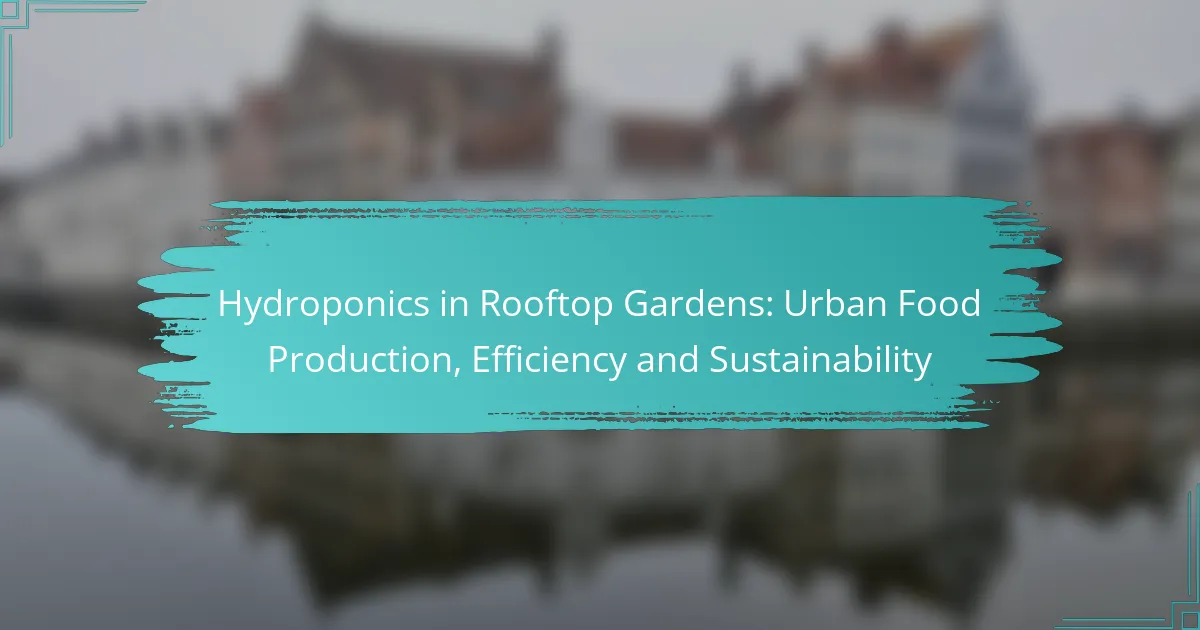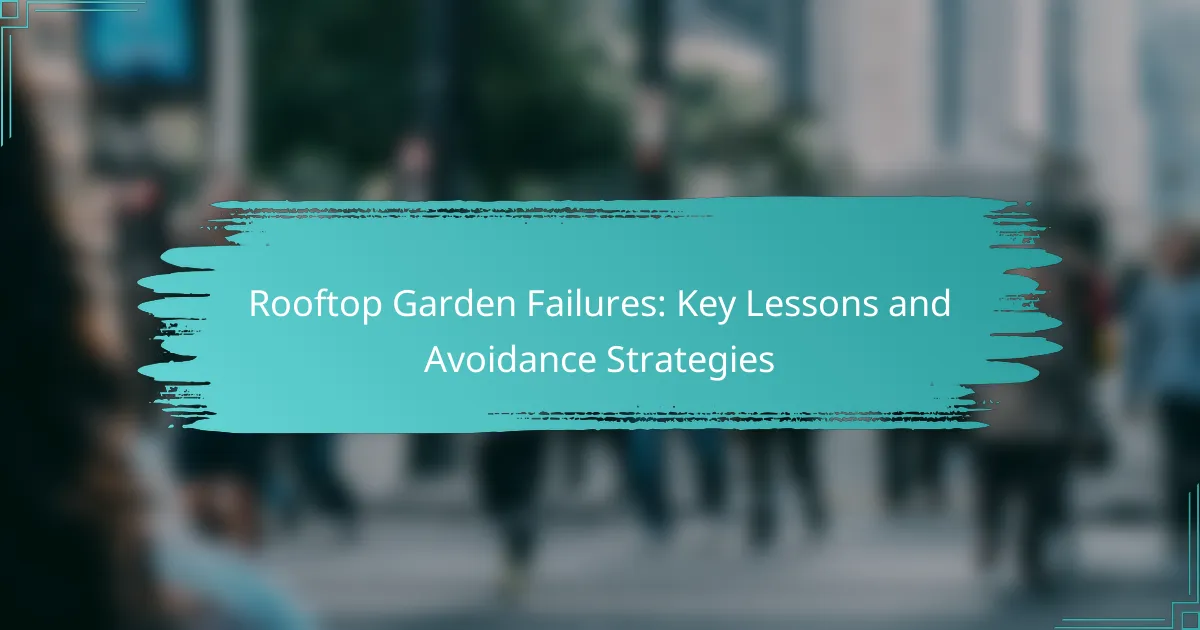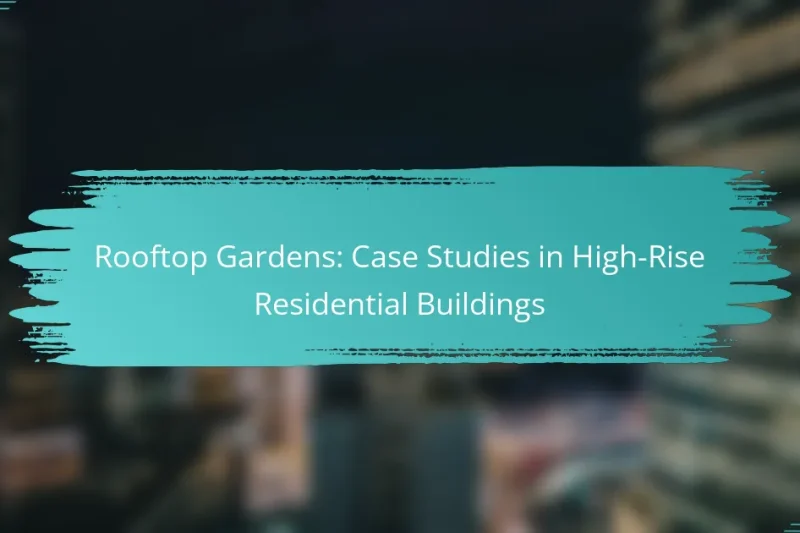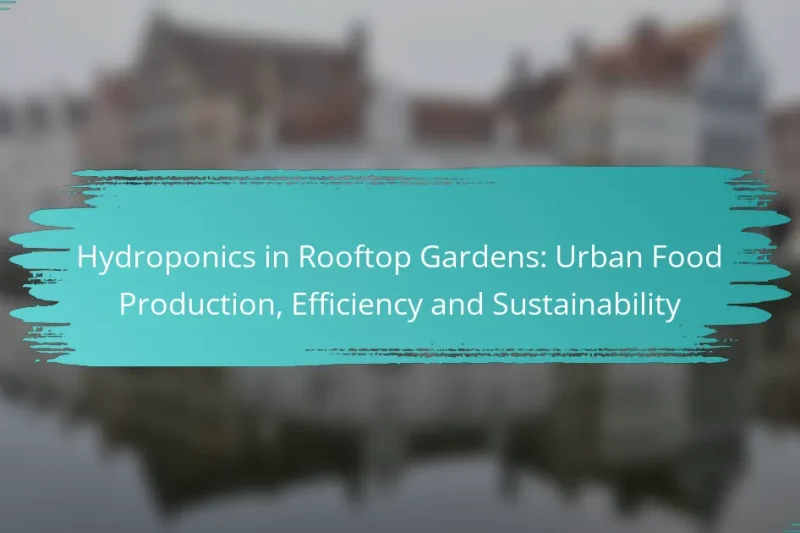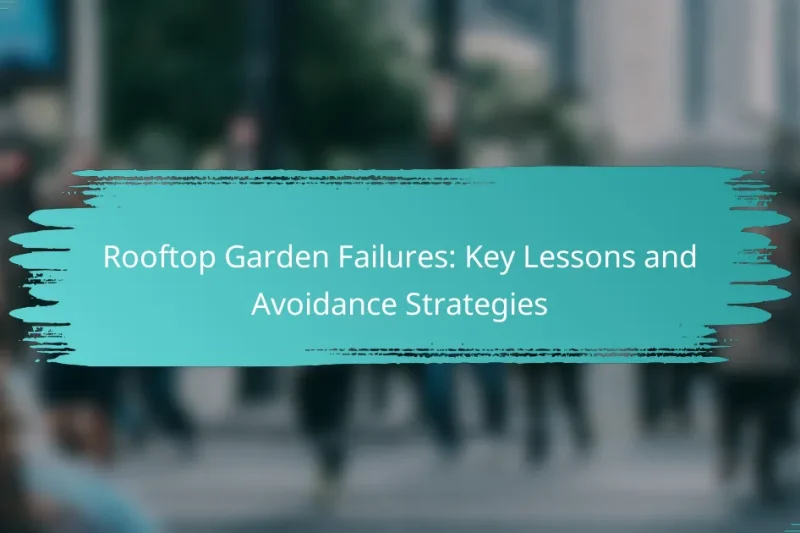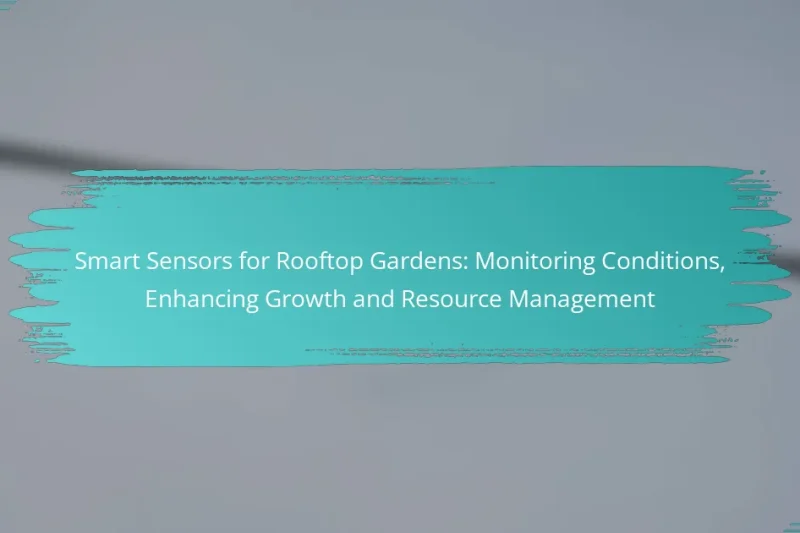Rooftop gardens play a crucial role in enhancing high-rise residential buildings by offering ecological benefits and … Rooftop Gardens: Case Studies in High-Rise Residential BuildingsRead more
Rooftop garden design services provide an excellent opportunity to enhance your property's aesthetics and value while promoting environmental sustainability. By converting unused rooftop areas into vibrant green spaces, you can enjoy a unique blend of beauty and functionality. Selecting the right service involves considering their experience and creativity, ensuring they can customize designs to meet your specific needs and budget.
Rooftop Gardens: Impact on Urban Property Values and Market Trends
Rooftop gardens are becoming a vital component of urban real estate, significantly boosting property values through … Rooftop Gardens: Impact on Urban Property Values and Market TrendsRead more
Hydroponics in Rooftop Gardens: Urban Food Production, Efficiency and Sustainability
Hydroponics revolutionizes urban food production by enabling crops to thrive in nutrient-rich water, making it an … Hydroponics in Rooftop Gardens: Urban Food Production, Efficiency and SustainabilityRead more
Rooftop Garden Failures: Key Lessons and Avoidance Strategies
Rooftop gardens can transform urban spaces, but they often encounter failures due to factors like poor … Rooftop Garden Failures: Key Lessons and Avoidance StrategiesRead more
Green Roof Technologies: Functionality, Aesthetics and Environmental Benefits
Green roof technologies are innovative solutions that enhance urban environments by providing energy efficiency, improving biodiversity, … Green Roof Technologies: Functionality, Aesthetics and Environmental BenefitsRead more
Traditional vs. Innovative Technologies in Rooftop Garden Design: Effectiveness, Cost and Sustainability
The design of rooftop gardens can be approached through traditional or innovative technologies, each offering distinct … Traditional vs. Innovative Technologies in Rooftop Garden Design: Effectiveness, Cost and SustainabilityRead more
Smart Sensors for Rooftop Gardens: Monitoring Conditions, Enhancing Growth and Resource Management
Smart sensors are revolutionizing rooftop gardens by offering real-time insights into environmental conditions, which are crucial … Smart Sensors for Rooftop Gardens: Monitoring Conditions, Enhancing Growth and Resource ManagementRead more
Rooftop Gardens: Climate Zone Comparisons and Insights
Rooftop gardens offer unique benefits and challenges that vary significantly across different climate zones. In temperate … Rooftop Gardens: Climate Zone Comparisons and InsightsRead more
Rooftop Gardens: Stormwater Management, Flood Mitigation and Water Conservation
Rooftop gardens are an innovative solution for managing stormwater in urban settings, effectively absorbing rainwater and … Rooftop Gardens: Stormwater Management, Flood Mitigation and Water ConservationRead more
Rooftop Garden Design: Cozy Spaces, Guest Entertainment and Comfort
Creating a rooftop garden designed for guest entertainment combines comfort, ambiance, and accessibility to foster social … Rooftop Garden Design: Cozy Spaces, Guest Entertainment and ComfortRead more
What are the benefits of rooftop garden design services?
Rooftop garden design services offer numerous advantages, including enhanced aesthetics, increased property value, and improved environmental conditions. By transforming unused rooftop space into lush gardens, property owners can enjoy both functional and aesthetic benefits.
Enhanced property value
Investing in a rooftop garden can significantly boost the value of your property. Well-designed green spaces are attractive to potential buyers and renters, often leading to higher market prices. Properties with rooftop gardens can see value increases ranging from 10% to 20%, depending on the location and design quality.
Consider consulting with real estate professionals to understand how a rooftop garden could specifically enhance your property's appeal in your local market.
Improved air quality
Rooftop gardens play a crucial role in improving air quality by filtering pollutants and absorbing carbon dioxide. Plants naturally produce oxygen and can help mitigate urban heat, leading to a healthier environment. Studies suggest that green roofs can reduce air pollution levels by a notable percentage.
Incorporating a variety of plants can maximize these benefits, as different species contribute uniquely to air purification and overall ecosystem health.
Increased outdoor space
Rooftop gardens effectively expand usable outdoor space, providing a serene retreat in urban environments. This additional area can be utilized for relaxation, social gatherings, or even urban farming. Depending on the size of the rooftop, you can create diverse zones for different activities.
When designing your rooftop garden, consider including seating areas, planters, and pathways to enhance functionality and enjoyment.
Energy efficiency
Rooftop gardens can improve a building's energy efficiency by providing natural insulation. They help regulate indoor temperatures, reducing the need for heating and cooling systems. This can lead to lower energy bills, with potential savings of 20% or more in some cases.
To maximize energy efficiency, select plants that thrive in your climate and consider incorporating reflective materials in your garden design.
Urban biodiversity
Creating a rooftop garden contributes to urban biodiversity by providing habitats for various species, including birds, insects, and pollinators. This is particularly important in densely populated areas where natural habitats are limited. A diverse plant selection can attract beneficial wildlife and promote ecological balance.
Engaging with local environmental organizations can help you choose native plants that support local ecosystems and enhance biodiversity in your rooftop garden.
How to choose the right rooftop garden design service in New York?
To choose the right rooftop garden design service in New York, focus on their experience, creativity, and ability to tailor designs to your specific needs. Look for a company that understands local regulations and can work within your budget while maximizing your outdoor space.
Check portfolio and past projects
Reviewing a service's portfolio is crucial to understanding their design style and capabilities. Look for a variety of completed projects that showcase different types of rooftop gardens, such as edible gardens, ornamental spaces, or sustainable designs. This will help you gauge their versatility and creativity.
Consider asking for case studies or examples of similar projects they have completed in New York. This can provide insight into how they handle local challenges, such as weight restrictions and weather conditions.
Evaluate client testimonials
Client testimonials can provide valuable insights into a design service's reliability and quality of work. Look for reviews on their website, social media, or third-party platforms to get a balanced view of their reputation. Pay attention to comments about communication, project timelines, and overall satisfaction.
Don't hesitate to ask for references from past clients. Speaking directly with previous customers can help you understand their experience and whether the service delivered on its promises.
Assess design customization options
Customization is key to creating a rooftop garden that meets your specific needs and preferences. Inquire about the design process and how much input you will have in selecting plants, materials, and layout. A good design service should be willing to collaborate with you to achieve your vision.
Additionally, consider whether they offer sustainable options, such as native plants or eco-friendly materials. These choices can enhance the garden's aesthetics while benefiting the local environment and potentially lowering maintenance costs.
What are the typical costs of rooftop garden design services?
The costs of rooftop garden design services can vary significantly based on various factors, including location, design complexity, and materials used. Generally, homeowners can expect to invest anywhere from a few thousand to tens of thousands of dollars for a complete rooftop garden setup.
Average pricing per square foot
On average, rooftop garden design services can range from approximately $15 to $50 per square foot. This pricing typically includes design, installation, and basic planting. Higher-end designs with specialized features, such as irrigation systems or custom furniture, may push costs to the upper end of this range or beyond.
Factors affecting costs
<pSeveral factors can influence the overall costs of rooftop garden design services. The size of the space is a primary consideration; larger areas will naturally incur higher costs. Additionally, the choice of plants, soil quality, and structural modifications required for installation can significantly impact the final price.Local labor rates and regulations also play a crucial role. In urban areas, where demand for rooftop gardens is high, labor costs may be elevated. Furthermore, compliance with local building codes and zoning regulations can add to the complexity and expense of the project.
Budgeting for maintenance
<pMaintaining a rooftop garden requires ongoing investment, which should be factored into your budget. Regular maintenance tasks include watering, pruning, and seasonal planting, which can cost anywhere from $100 to $500 per month, depending on the size and complexity of the garden.It's wise to set aside a portion of your initial budget for unexpected maintenance needs, such as pest control or plant replacement. Establishing a maintenance plan with a local service can help manage these costs effectively and ensure your rooftop garden remains vibrant and healthy over time.
What are the key elements of a successful rooftop garden design?
A successful rooftop garden design incorporates several essential elements, including plant selection, water management, and structural considerations. These components work together to create a sustainable and aesthetically pleasing green space that thrives in an urban environment.
Plant selection and layout
Choosing the right plants is crucial for a rooftop garden's success. Consider factors such as climate, sunlight exposure, and wind conditions when selecting plants. Opt for hardy species that can withstand the unique challenges of rooftop environments, such as succulents, herbs, and native plants.
Layout is equally important; arrange plants to maximize space and aesthetic appeal. Group plants with similar water and light needs together, and consider vertical gardening techniques to enhance visual interest while saving space.
Water management systems
Effective water management is vital for rooftop gardens to prevent overwatering and ensure plant health. Implementing a drip irrigation system can provide consistent moisture while conserving water. Rainwater harvesting systems can also be beneficial, capturing runoff for irrigation use.
Be mindful of drainage as well; ensure that the rooftop has adequate drainage systems to prevent water pooling, which can damage both plants and the building structure. Regularly check and maintain these systems to avoid clogs and overflow.
Structural considerations
Before starting a rooftop garden, assess the structural integrity of the building. Consult with a structural engineer to determine if the roof can support the weight of soil, plants, and water. Most rooftops can handle a garden, but it's essential to verify load limits and comply with local building codes.
Consider using lightweight soil alternatives and modular planting systems to reduce weight. Additionally, ensure that the garden design does not obstruct access to essential building features like HVAC systems or fire escapes.
What are the best plants for rooftop gardens in urban areas?
The best plants for rooftop gardens in urban areas are those that can thrive in limited soil depth, withstand wind, and require minimal maintenance. Consideration of local climate and sunlight exposure is crucial for selecting the right varieties.
Drought-resistant varieties
Drought-resistant plants are ideal for rooftop gardens, especially in urban settings where water access may be limited. Succulents, such as sedums and agaves, are excellent choices due to their ability to store water and thrive in dry conditions.
Other suitable options include lavender and ornamental grasses, which not only require less water but also add aesthetic appeal. When planning your garden, ensure you use well-draining soil to prevent root rot and maximize the drought tolerance of these plants.
Pollinator-friendly plants
Incorporating pollinator-friendly plants into your rooftop garden supports local ecosystems and enhances biodiversity. Flowers like coneflowers, bee balm, and various herbs such as basil and thyme attract bees, butterflies, and other beneficial insects.
Choose a mix of flowering plants that bloom at different times throughout the growing season to provide continuous food sources for pollinators. Additionally, avoid using pesticides to create a safe habitat for these essential creatures, ensuring a thriving rooftop garden.


